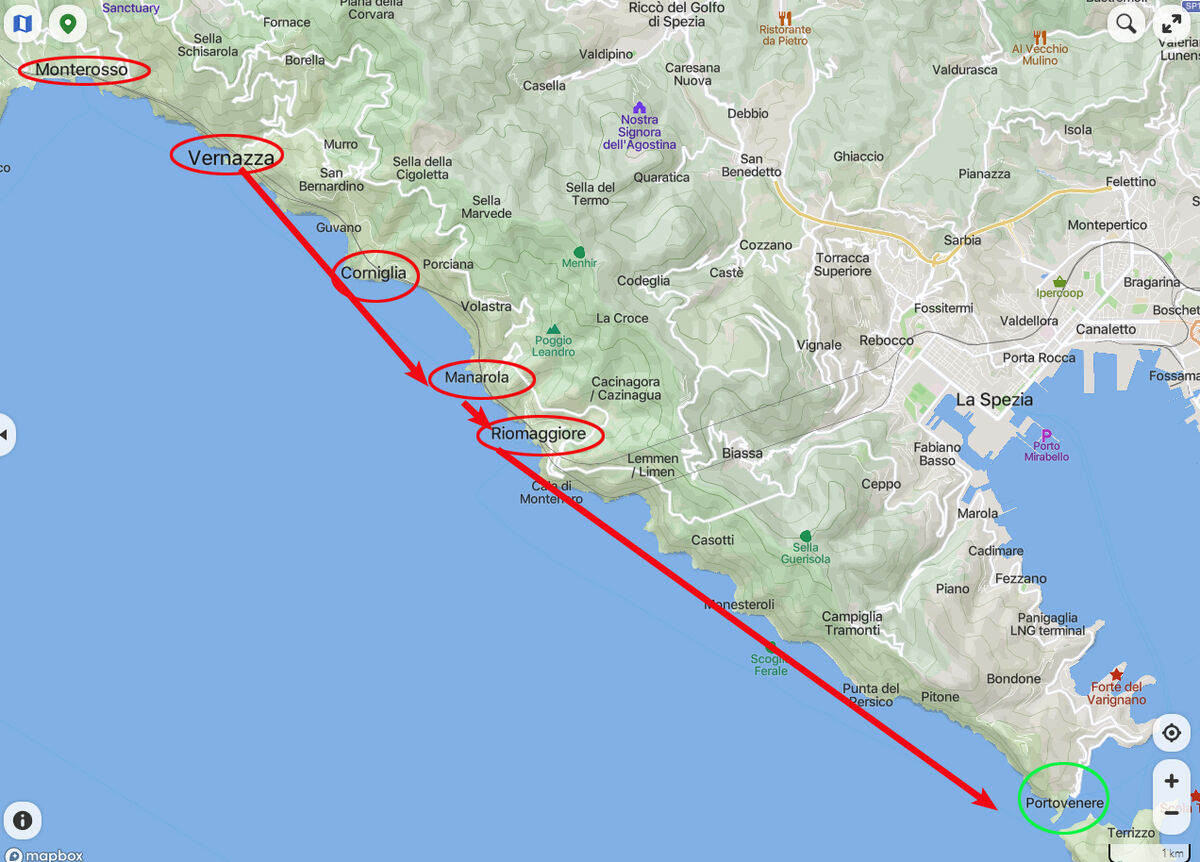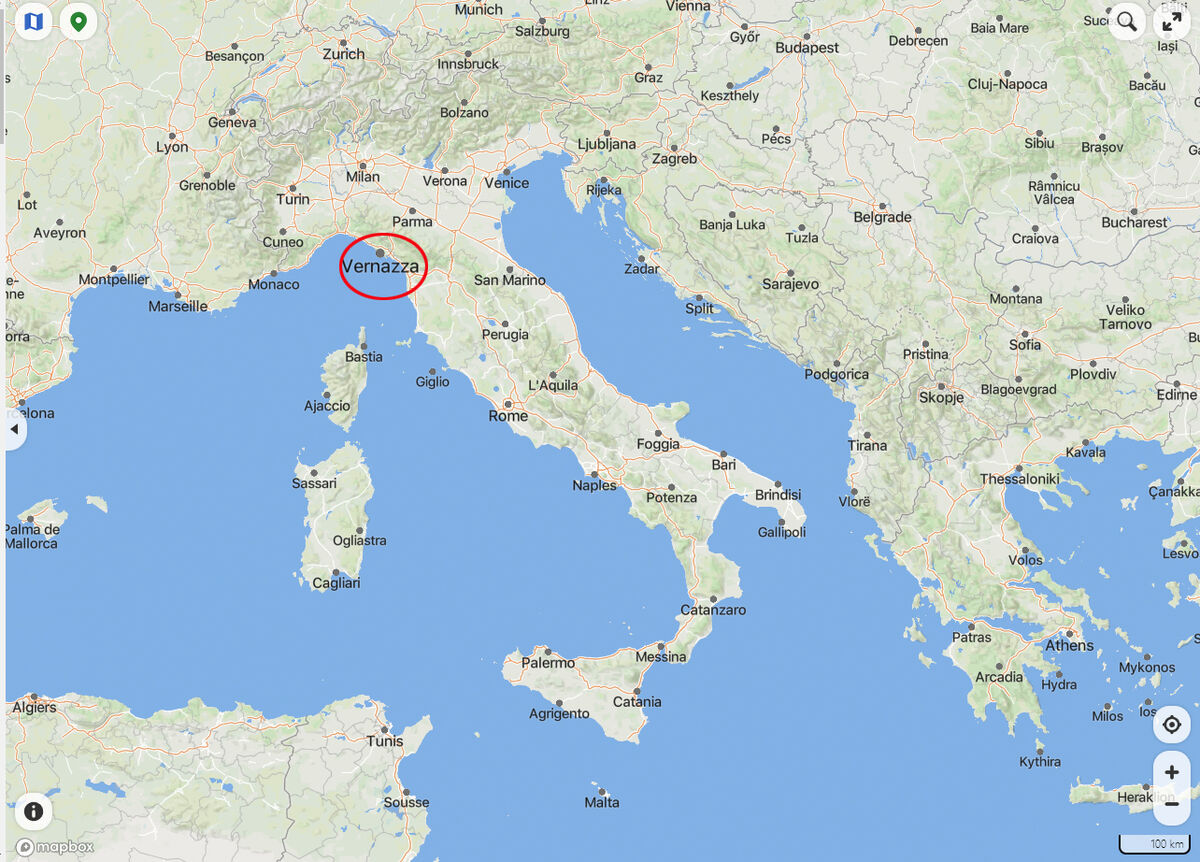Italy: Cinque Terre Part 26 - Natural Features Of The Ligurian Coast
Dec 6, 2023 14:46:41 #
Not only were the towns of Cinque Terre interesting and very photogenic, but the impressive rock formations were incredible. Here's an interesting description of the geology which the rock nerds among us will find fascinating, I'm sure. From the website: http://www.italy-tours-in-nature.com/cinque-terre-geology.html
Cinque Terre Geology: One of the Most Outstanding Stretches of Italian Coastline Revealed.
The Ligurian coastline is possibly the most iconic in Italy. In addition to being extremely scenic and beautiful in its own right, the coast of the Cinque Terre is home to some incredibly complex and exciting geology. It is composed of the Maritime Alps in the west and the Ligurian ‘nappes’ of the Apennines in the east. Along this coast, the north-northwest convergence of the Alpine orogeny gives way to the active east-northeast convergence along the Apennines.
Something surprising about the coastline in this region is how dramatically the relief is so near the seafront – the mountains along the coast rocket out of the sea over 1,100 meters within 5 kilometers of the coastline: this is greater than any of the peaks in the Scottish highlands, well known for their significant relief.
The western promontory of La Spezia Gulf (Golfo della Spezia) and its northward prolongation along the Ligurian Sea is an excellent area where to study the sedimentary and deformational history of the Northern Apennines, as they reach the coastline. One of the most spectacular geological cross-sections of the Apennines is visible on the cliffs along the coast with outcrops of units of the Mesozoic Tethys ocean domain and of the Mesozoic to Cenozoic basins of the Adria continental margin. These units record significant deformations from the Jurassic ocean spreading phase to the Late Cretaceous-Miocene subduction and collisional phases. The La Spezia fold is a pluri-km structure that involves the Adria margin units (Tuscan Nappe); then, the oceanic realm – the so-called Ligurian Domain – is entered with the beautiful exposures of the steep Cinque Terre sea-cliffs.
Regional Geologic Setting
The complex geologic history of the region is punctuated by several major tectonic transitions:
Deposition of Ligurian deep marine sediments along the European Corsica-Sardinia massif that marked the northern boundary of the Tethys Ocean (Jurassic to Paleocene);
Transition from a passive margin to an actively subducting plate boundary, with associated deposition of Sub-Ligurian sedimentary rocks (Paleocene – early Miocene);
The thick sequence of sediment deposited on the Adria passive plate margin (located across the then-narrowing Tethys Ocean from the Ligurian rocks) are involved in the Adria-Europe continental collision. The rocks, described here as the Tuscan units, were subjected to intense deformation (Miocene to Present).
Structural Geology
All three major lithologic divisions in the Cinque Terre Northern Apennines fold-and-thrust belt. The rocks exposed along the Cinque Terre cliffs are highly deformed as a result of the Adria-Europe continental collision.
During the Late Miocene continental plate collision, Ligurian and Sub-Ligurian rocks deposited on the European Plate smashed into Tuscan sediments deposited on the Adria Plate. Ligurian and Sub-Ligurian rocks were deformed during the initial phases of the collision and were then over-thrusted over the Tuscan units.
Subjected to extreme pressures, internally the Tuscan units overthrusted themselves, leading to a doubled section. The lower or underthrusted Tuscan section is highly metamorphosed and is referred to as the Metamorphic Tuscan Succession; the over-riding portion of the Tuscan units is called the Tuscan Nappe.
The La Spezia fold – a recumbent anticline exposed in the cliffs near Vernazza – is an expression of the compressive forces that were involved in the building of the Northern Apennines.
Lithology
Ligurian Units (Jurassic to Paleocene)
The rocks of the Ligurian units consist of marine sedimentary rocks and ophiolite sequences deposited in the Ligurian-Piedmont Ocean (“Oceano Ligure-Piemontese”). This ocean basin was a former piece of oceanic crust associated with the Tethys Ocean. Fragments of Piedmont-Ligurian oceanic crust are also preserved in the Penninic ‘nappes’ of the Alps and in the Tuscan ‘nappes’ of the Apennines.
Within the Ligurian ‘nappes’ are some classic examples of continental margin ophiolites. These ophiolites consist of exhumed, subcontinental lithospheric mantle iherzolite directly overlain by basaltic pillow lavas. The ophiolites along the Ligurian coast along with those in the Central Alps and Apennines were instrumental in shaping the early understanding of obducted oceanic crust.
Ligurian rocks have been involved in every phase of tectonic deformation in the Northern Apennines; as a result, the rocks of the unit appear heavily folded and deformed in the Cinque Terre area.
Sub-Ligurian Units (Paleocene – Miocene)
The composition of the Sub-Ligurian unit primarily consists of clastic sediments deposited in a shallow marine environment. In the Cinque Terre area, the primary Sub-Ligurian rocks exposed are members of the Canetolo Unit, a highly deformed Paleocene calc-argillitic rock.
Generally, rocks in the Sub-Ligurian units present a transition from deep marine limestones in the older section to sandstones deposited in a shallow environment in the younger section. As the depostional setting for Sub-Ligurian units was an oceanic basin being slowly closed up as the European and Adria plates moved towards each other, the shallowing-upward sequence makes sense.
Tuscan Units (Triassic to Miocene)
Tuscan unit rocks were deposited in a passive margin marine environment that existed on the northern edge of the Adria Plate from the Triassic through to the Miocene. The sedimentary package is between 3 and 4 kilometers thick, though compressional deformation resulting from the continental collision during the Miocene has overthrusted portions of the Tuscan units over themselves, causing a doubling of the section.
The most interesting stretch where to observe the exposed lithology of the Cinque Terre geology is by the villages of Riomaggiore, Manarola and Vernazza, right by the harbour; the Via dell’Amore is also quite impressive from the viewpoint of geology; unfortunately, however, at the moment it is not accessible to the public.
For additional images from the drive through La Spezia and Porto Venere as well as images of the five villages from the ferry ride, please see my previous posts. The last post includes a description of the places of interest in Monterosso.
https://www.uglyhedgehog.com/t-789349-1.html#14224070
https://www.uglyhedgehog.com/t-789440-1.html#14226109
https://www.uglyhedgehog.com/t-789648-1.html
https://www.uglyhedgehog.com/t-789843-1.html#14233553
https://www.uglyhedgehog.com/t-789942-1.html
https://www.uglyhedgehog.com/t-790111-1.html
https://www.uglyhedgehog.com/t-790407-1.html#14245176
https://www.uglyhedgehog.com/t-790582-1.html
https://www.uglyhedgehog.com/t-790774-1.html#14253600
https://www.uglyhedgehog.com/t-790885-1.html
https://www.uglyhedgehog.com/t-791072-1.html#14259965
https://www.uglyhedgehog.com/t-791170-1.html#14262740
https://www.uglyhedgehog.com/t-791259-1.html#14264600
https://www.uglyhedgehog.com/t-791463-1.html
https://www.uglyhedgehog.com/t-791640-1.html#14273073
https://www.uglyhedgehog.com/t-791754-1.html#14274855
https://www.uglyhedgehog.com/t-791951-1.html#14279165
https://www.uglyhedgehog.com/t-792124-1.html
https://www.uglyhedgehog.com/t-792566-1.html#14293133
https://www.uglyhedgehog.com/t-792656-1.html#14295290 (Vernazza Narrative)
https://www.uglyhedgehog.com/t-792920-1.html#14301509
https://www.uglyhedgehog.com/t-793186-1.html#14306391
https://www.uglyhedgehog.com/t-793360-1.html#14310130
https://www.uglyhedgehog.com/t-793518-1.html#14313058
https://www.uglyhedgehog.com/t-793733-1.html#14318307
I hope you enjoy these!
Cinque Terre Geology: One of the Most Outstanding Stretches of Italian Coastline Revealed.
The Ligurian coastline is possibly the most iconic in Italy. In addition to being extremely scenic and beautiful in its own right, the coast of the Cinque Terre is home to some incredibly complex and exciting geology. It is composed of the Maritime Alps in the west and the Ligurian ‘nappes’ of the Apennines in the east. Along this coast, the north-northwest convergence of the Alpine orogeny gives way to the active east-northeast convergence along the Apennines.
Something surprising about the coastline in this region is how dramatically the relief is so near the seafront – the mountains along the coast rocket out of the sea over 1,100 meters within 5 kilometers of the coastline: this is greater than any of the peaks in the Scottish highlands, well known for their significant relief.
The western promontory of La Spezia Gulf (Golfo della Spezia) and its northward prolongation along the Ligurian Sea is an excellent area where to study the sedimentary and deformational history of the Northern Apennines, as they reach the coastline. One of the most spectacular geological cross-sections of the Apennines is visible on the cliffs along the coast with outcrops of units of the Mesozoic Tethys ocean domain and of the Mesozoic to Cenozoic basins of the Adria continental margin. These units record significant deformations from the Jurassic ocean spreading phase to the Late Cretaceous-Miocene subduction and collisional phases. The La Spezia fold is a pluri-km structure that involves the Adria margin units (Tuscan Nappe); then, the oceanic realm – the so-called Ligurian Domain – is entered with the beautiful exposures of the steep Cinque Terre sea-cliffs.
Regional Geologic Setting
The complex geologic history of the region is punctuated by several major tectonic transitions:
Deposition of Ligurian deep marine sediments along the European Corsica-Sardinia massif that marked the northern boundary of the Tethys Ocean (Jurassic to Paleocene);
Transition from a passive margin to an actively subducting plate boundary, with associated deposition of Sub-Ligurian sedimentary rocks (Paleocene – early Miocene);
The thick sequence of sediment deposited on the Adria passive plate margin (located across the then-narrowing Tethys Ocean from the Ligurian rocks) are involved in the Adria-Europe continental collision. The rocks, described here as the Tuscan units, were subjected to intense deformation (Miocene to Present).
Structural Geology
All three major lithologic divisions in the Cinque Terre Northern Apennines fold-and-thrust belt. The rocks exposed along the Cinque Terre cliffs are highly deformed as a result of the Adria-Europe continental collision.
During the Late Miocene continental plate collision, Ligurian and Sub-Ligurian rocks deposited on the European Plate smashed into Tuscan sediments deposited on the Adria Plate. Ligurian and Sub-Ligurian rocks were deformed during the initial phases of the collision and were then over-thrusted over the Tuscan units.
Subjected to extreme pressures, internally the Tuscan units overthrusted themselves, leading to a doubled section. The lower or underthrusted Tuscan section is highly metamorphosed and is referred to as the Metamorphic Tuscan Succession; the over-riding portion of the Tuscan units is called the Tuscan Nappe.
The La Spezia fold – a recumbent anticline exposed in the cliffs near Vernazza – is an expression of the compressive forces that were involved in the building of the Northern Apennines.
Lithology
Ligurian Units (Jurassic to Paleocene)
The rocks of the Ligurian units consist of marine sedimentary rocks and ophiolite sequences deposited in the Ligurian-Piedmont Ocean (“Oceano Ligure-Piemontese”). This ocean basin was a former piece of oceanic crust associated with the Tethys Ocean. Fragments of Piedmont-Ligurian oceanic crust are also preserved in the Penninic ‘nappes’ of the Alps and in the Tuscan ‘nappes’ of the Apennines.
Within the Ligurian ‘nappes’ are some classic examples of continental margin ophiolites. These ophiolites consist of exhumed, subcontinental lithospheric mantle iherzolite directly overlain by basaltic pillow lavas. The ophiolites along the Ligurian coast along with those in the Central Alps and Apennines were instrumental in shaping the early understanding of obducted oceanic crust.
Ligurian rocks have been involved in every phase of tectonic deformation in the Northern Apennines; as a result, the rocks of the unit appear heavily folded and deformed in the Cinque Terre area.
Sub-Ligurian Units (Paleocene – Miocene)
The composition of the Sub-Ligurian unit primarily consists of clastic sediments deposited in a shallow marine environment. In the Cinque Terre area, the primary Sub-Ligurian rocks exposed are members of the Canetolo Unit, a highly deformed Paleocene calc-argillitic rock.
Generally, rocks in the Sub-Ligurian units present a transition from deep marine limestones in the older section to sandstones deposited in a shallow environment in the younger section. As the depostional setting for Sub-Ligurian units was an oceanic basin being slowly closed up as the European and Adria plates moved towards each other, the shallowing-upward sequence makes sense.
Tuscan Units (Triassic to Miocene)
Tuscan unit rocks were deposited in a passive margin marine environment that existed on the northern edge of the Adria Plate from the Triassic through to the Miocene. The sedimentary package is between 3 and 4 kilometers thick, though compressional deformation resulting from the continental collision during the Miocene has overthrusted portions of the Tuscan units over themselves, causing a doubling of the section.
The most interesting stretch where to observe the exposed lithology of the Cinque Terre geology is by the villages of Riomaggiore, Manarola and Vernazza, right by the harbour; the Via dell’Amore is also quite impressive from the viewpoint of geology; unfortunately, however, at the moment it is not accessible to the public.
For additional images from the drive through La Spezia and Porto Venere as well as images of the five villages from the ferry ride, please see my previous posts. The last post includes a description of the places of interest in Monterosso.
https://www.uglyhedgehog.com/t-789349-1.html#14224070
https://www.uglyhedgehog.com/t-789440-1.html#14226109
https://www.uglyhedgehog.com/t-789648-1.html
https://www.uglyhedgehog.com/t-789843-1.html#14233553
https://www.uglyhedgehog.com/t-789942-1.html
https://www.uglyhedgehog.com/t-790111-1.html
https://www.uglyhedgehog.com/t-790407-1.html#14245176
https://www.uglyhedgehog.com/t-790582-1.html
https://www.uglyhedgehog.com/t-790774-1.html#14253600
https://www.uglyhedgehog.com/t-790885-1.html
https://www.uglyhedgehog.com/t-791072-1.html#14259965
https://www.uglyhedgehog.com/t-791170-1.html#14262740
https://www.uglyhedgehog.com/t-791259-1.html#14264600
https://www.uglyhedgehog.com/t-791463-1.html
https://www.uglyhedgehog.com/t-791640-1.html#14273073
https://www.uglyhedgehog.com/t-791754-1.html#14274855
https://www.uglyhedgehog.com/t-791951-1.html#14279165
https://www.uglyhedgehog.com/t-792124-1.html
https://www.uglyhedgehog.com/t-792566-1.html#14293133
https://www.uglyhedgehog.com/t-792656-1.html#14295290 (Vernazza Narrative)
https://www.uglyhedgehog.com/t-792920-1.html#14301509
https://www.uglyhedgehog.com/t-793186-1.html#14306391
https://www.uglyhedgehog.com/t-793360-1.html#14310130
https://www.uglyhedgehog.com/t-793518-1.html#14313058
https://www.uglyhedgehog.com/t-793733-1.html#14318307
I hope you enjoy these!
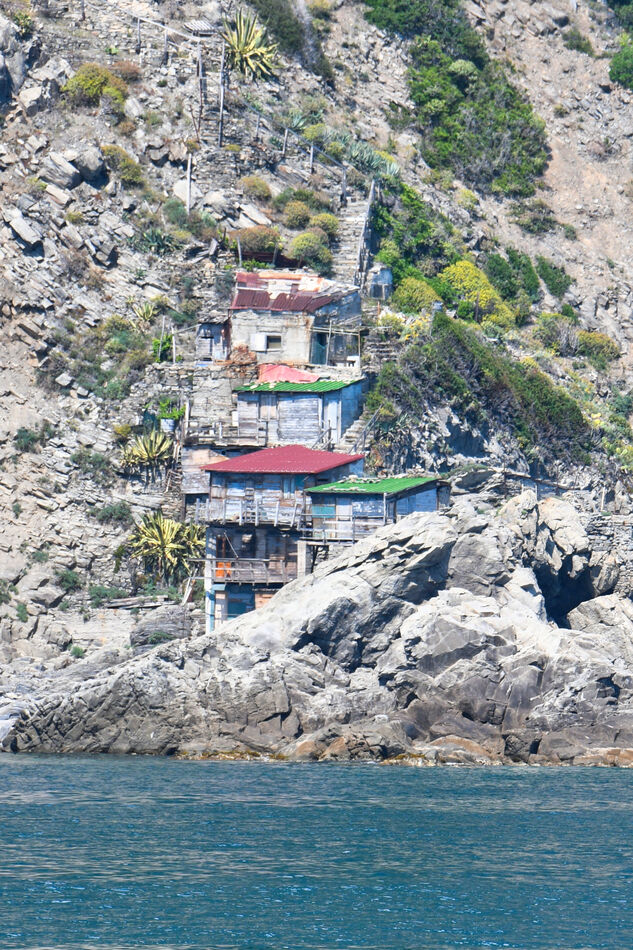
(Download)
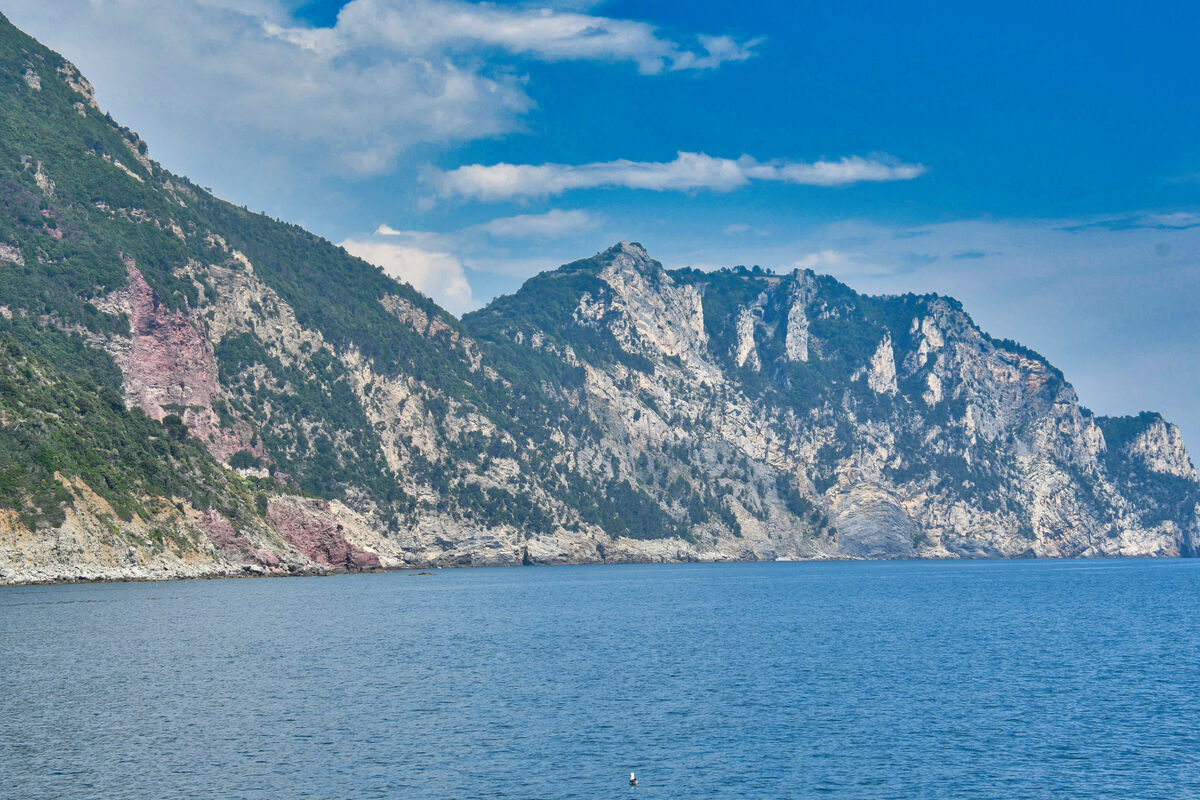
(Download)
A section of iron deposits.
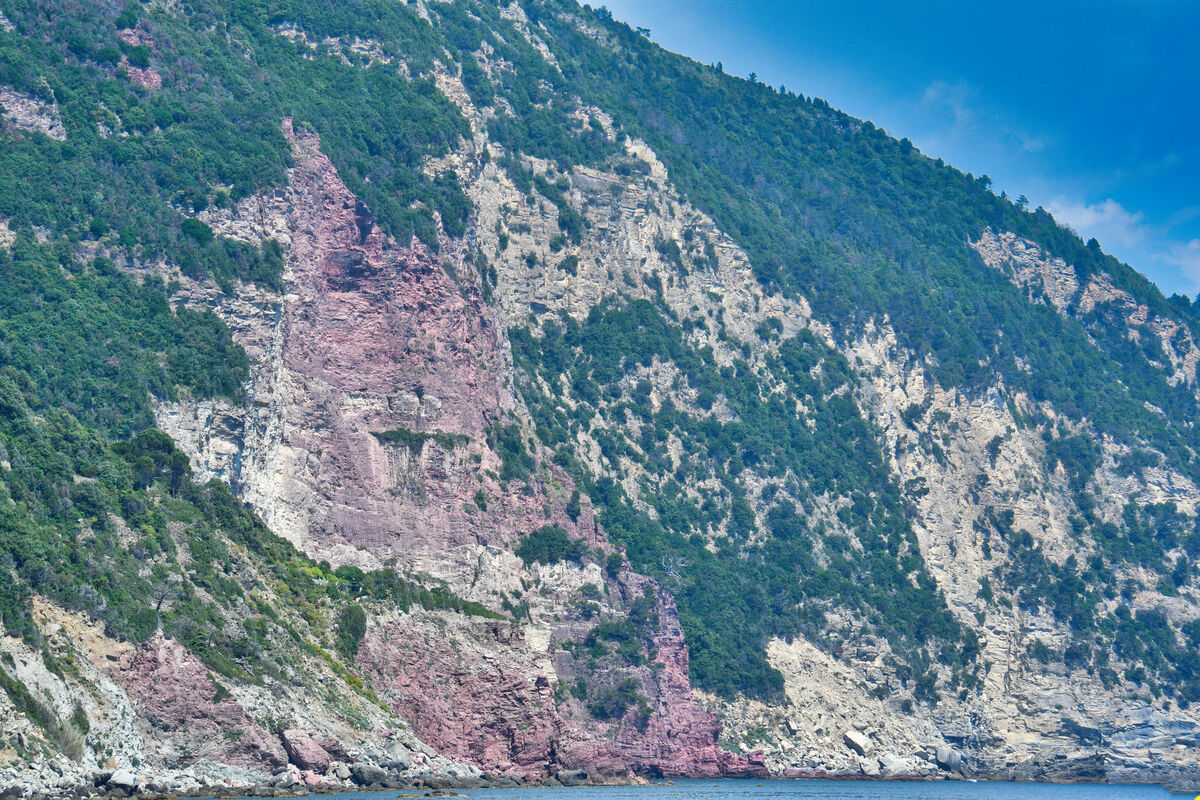
(Download)
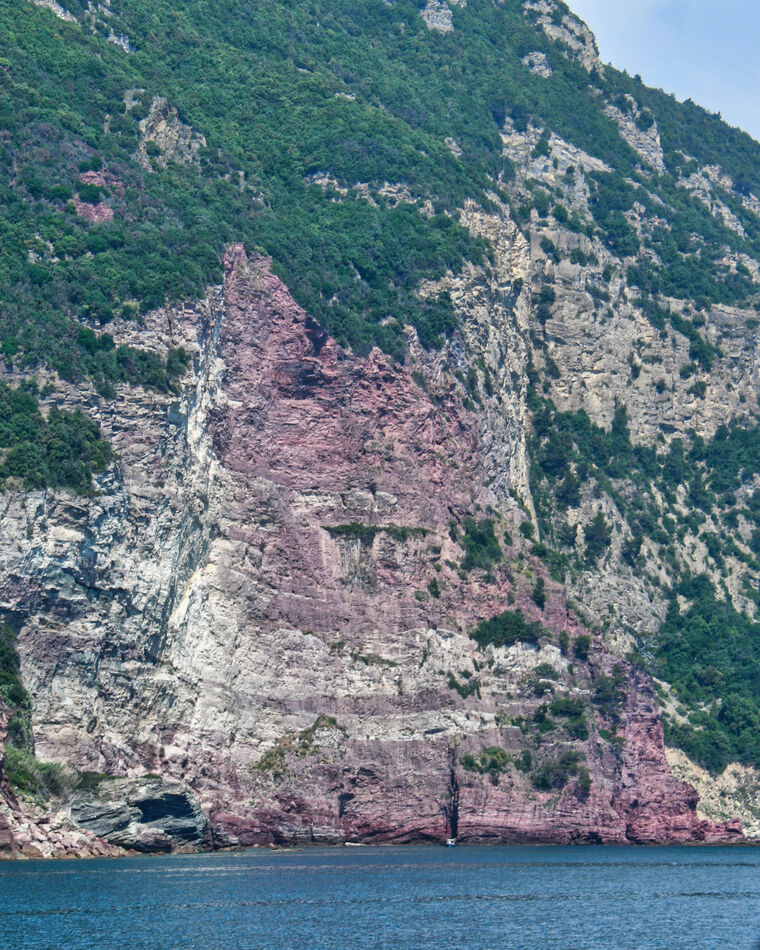
(Download)
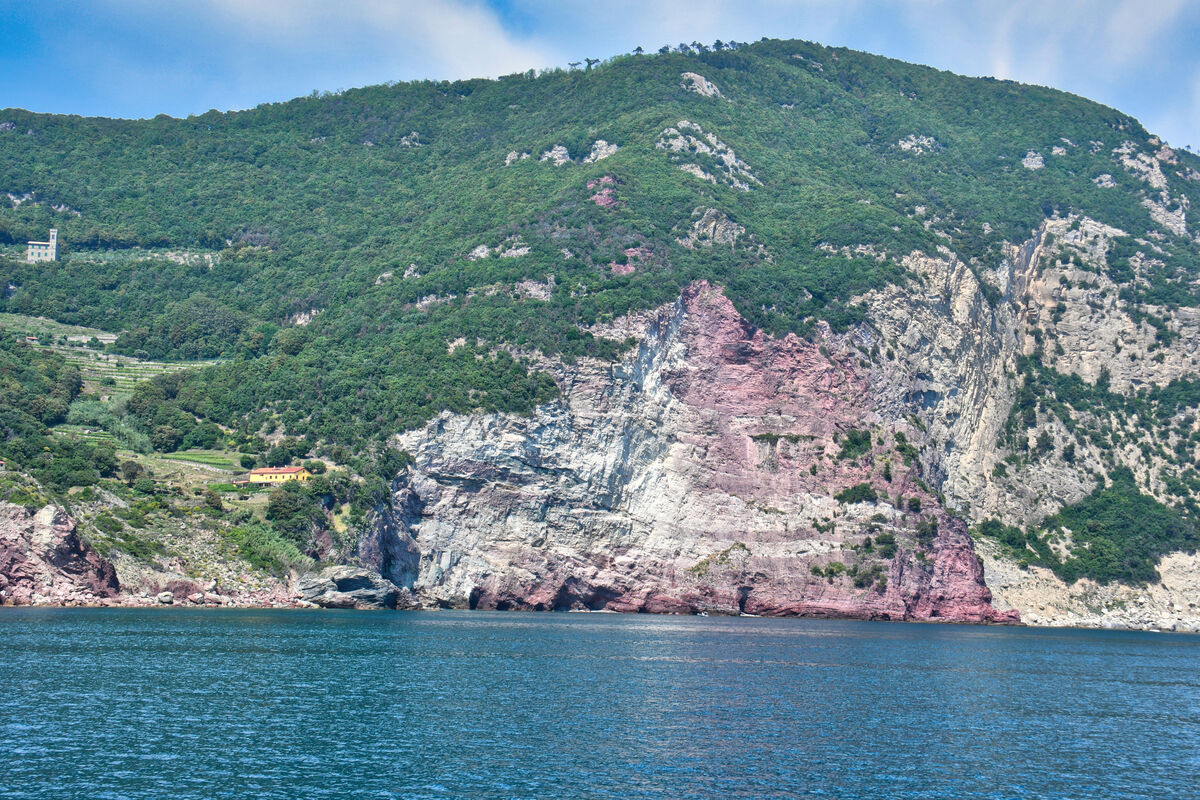
(Download)
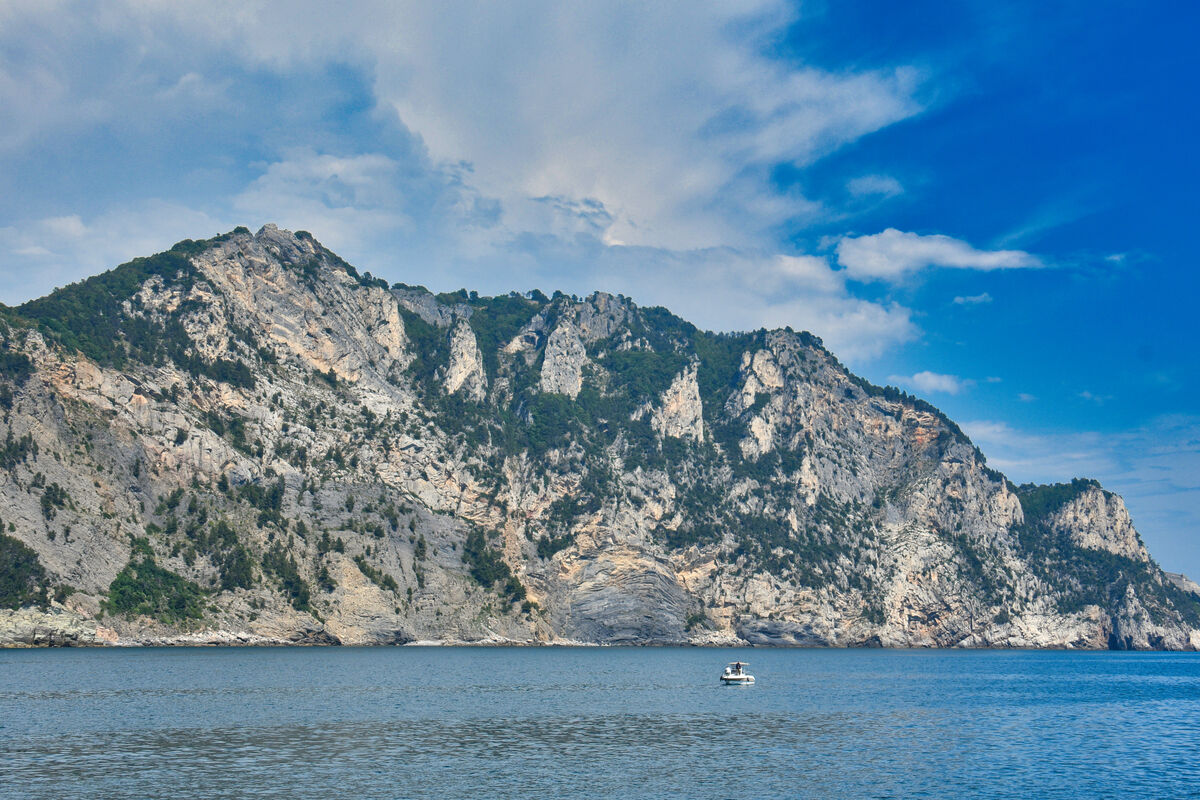
(Download)
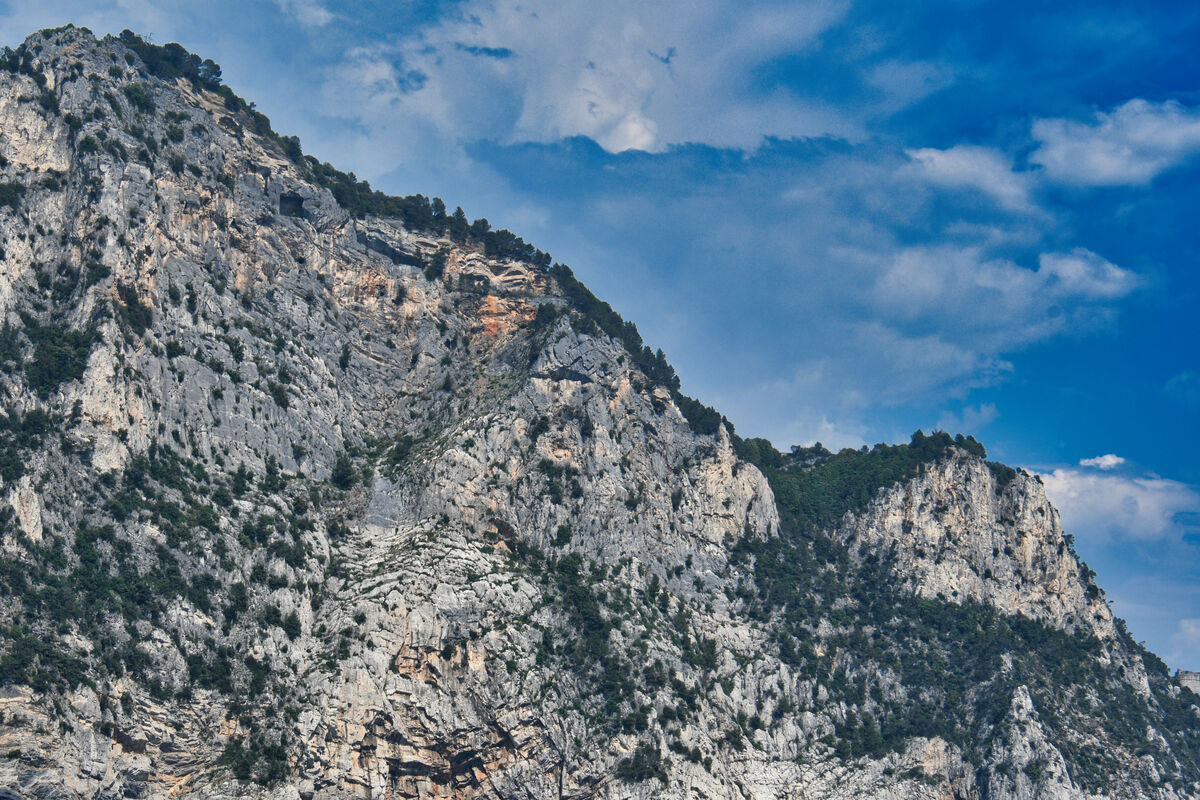
(Download)
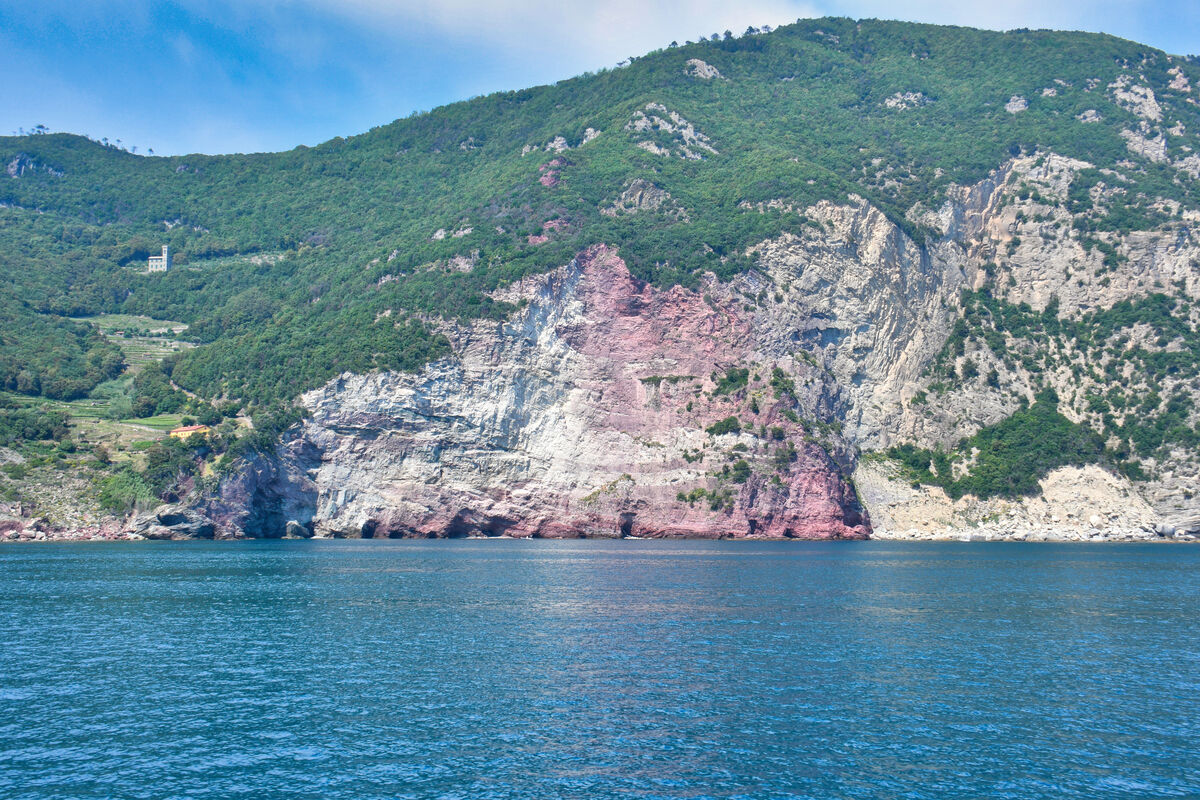
(Download)
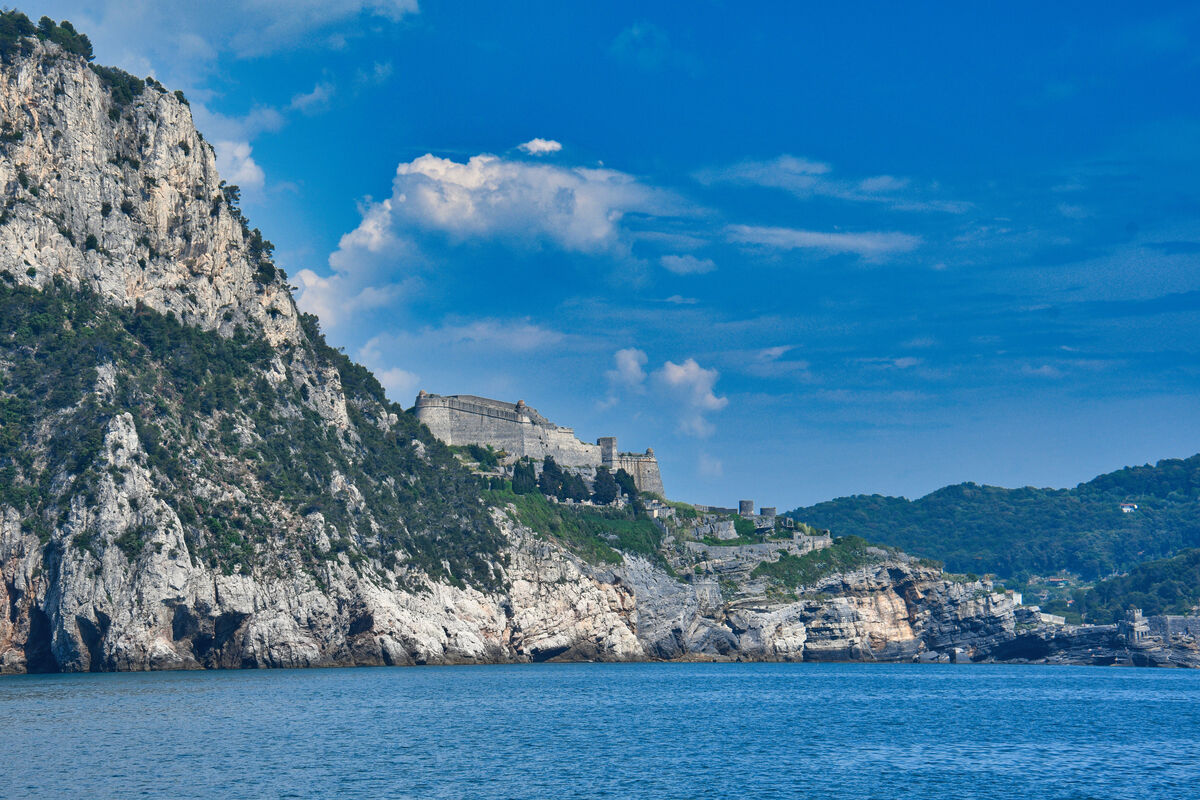
(Download)
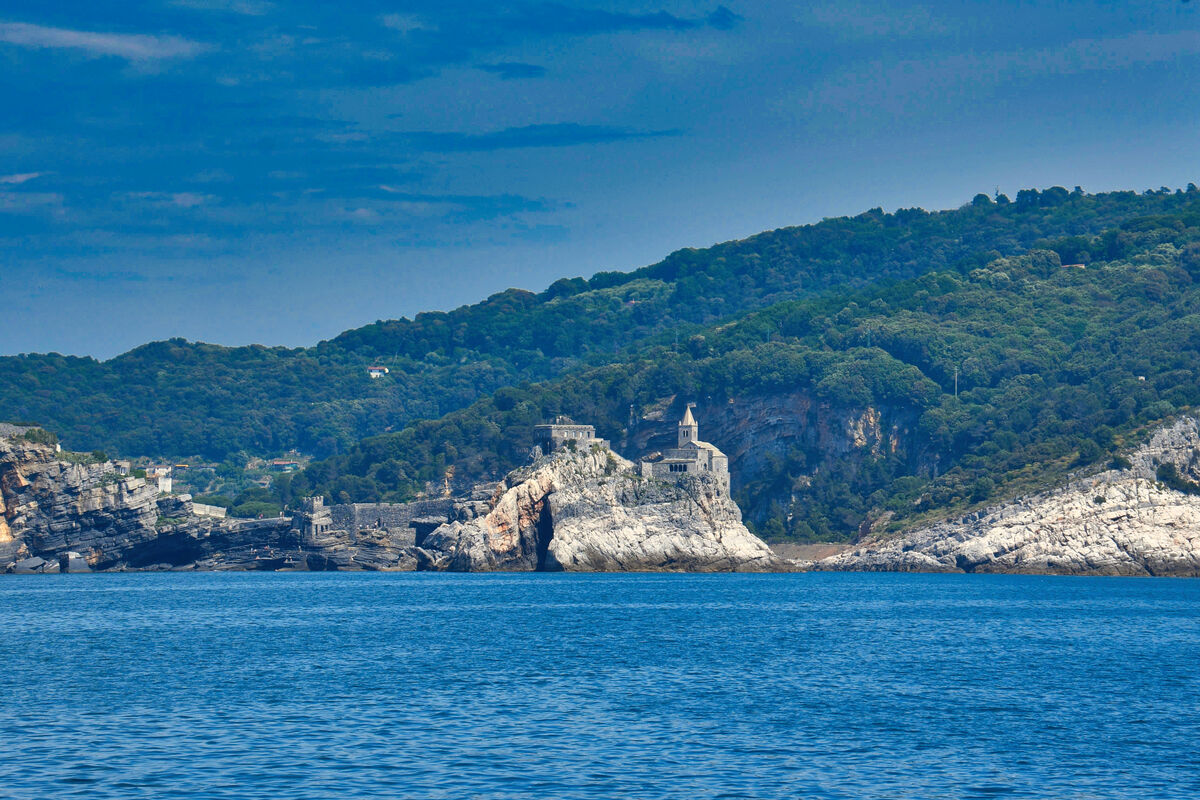
(Download)
Dec 6, 2023 14:47:58 #
Dec 6, 2023 15:27:04 #
Dec 6, 2023 17:08:32 #
srfmhg wrote:
Not only were the towns of Cinque Terre interestin... (show quote)
Another good set Mark. I would like to see where the steps in the first photo lead to.
Dec 6, 2023 17:34:35 #
Dec 6, 2023 20:24:07 #
Dec 6, 2023 20:27:18 #
DJphoto wrote:
Another good set Mark. I would like to see where the steps in the first photo lead to.
Thanks very much Dennis. I tried to zoom in on a wider angle shot and they just seem to end.
Dec 6, 2023 20:27:39 #
Dec 7, 2023 06:11:56 #
Dec 7, 2023 06:21:49 #
Beautiful set, Mark. You really captured the rugged coastline. I know these towns date back to medieval times but I still wonder who saw this landscape and thought “this looks like a great place to settle down”.
Dec 7, 2023 07:50:18 #
Dec 7, 2023 09:51:18 #
Your thorough exposition of the Ligurian coast, impresses me in many ways but mostly for the bravery or else ignorance of its people: have they never heard of earthquakes? It really seems as though the region has never experienced this most destructive event that happens in most other sites in the south of Italy and elsewhere in the Mediterranean. Except for monasteries, I know of no other settlements built on vertical cliffs!
Dec 7, 2023 12:24:17 #
Dec 8, 2023 02:07:15 #
Dec 8, 2023 02:09:08 #
joehel2 wrote:
Beautiful set, Mark. You really captured the rugged coastline. I know these towns date back to medieval times but I still wonder who saw this landscape and thought “this looks like a great place to settle down”.
Thanks very much Joe. I wondered that myself!
If you want to reply, then register here. Registration is free and your account is created instantly, so you can post right away.

